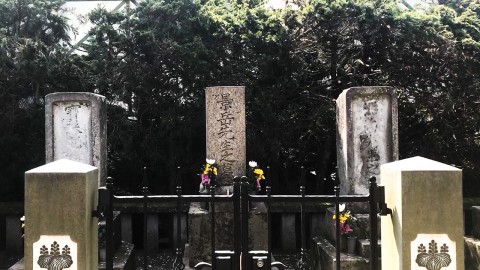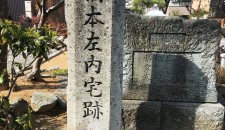Sanai Hashimoto
His second name was Keigaku.
He was born on April 19th, 1834 and died on November 1st, 1859.
He was a feudal retainer of Fukui domain, a patriot and a thinker at the end of the Edo Period.
He showed his excellent competence since his childhood and learned Dutch medicine from Koan Ogata at his Tekijuku academy in Osaka. After he was appointed as a dean of a domain school Meido-kan by Yoshinaga (Shungaku) Matsudaira, the lord of Fukui domain, he became very involved in domain’s and nation’s politics as Matsudaira’s close adviser. But, Sanai was executed at Ansei Purge by Naosuke Ii, who opposed to Sanai regarding a successor of the 13th Shogun of the Edo bakufu. He was 25 years old. His graves are in Kozukappara Eko-in Temple (Arakawa Ward, Tokyo), where he was executed, and Sanai Park in Fukui City, Fukui Prefecture, where he was born.

The grave of Sanai Hashimoto (Keigaku) in Sanai Park
He urged reformation of the shogunate government as a thinker and he was a pioneer who thought about security and development of Japan in relation to western powers. As an educator, he produced Kimimasa Yuri, who later played an active role in the new Meiji government including the drafting of ‘Charter Oath of Five Articles’ , and others. Also, it is known that Takamori Saigo, who contributed to the Meiji Restoration, admired his personality and capability, and trusted him. When he was 15 years old , he wrote “Keihatsuroku” (1848), in which his attitude to life was described, which is read by many people even now.


